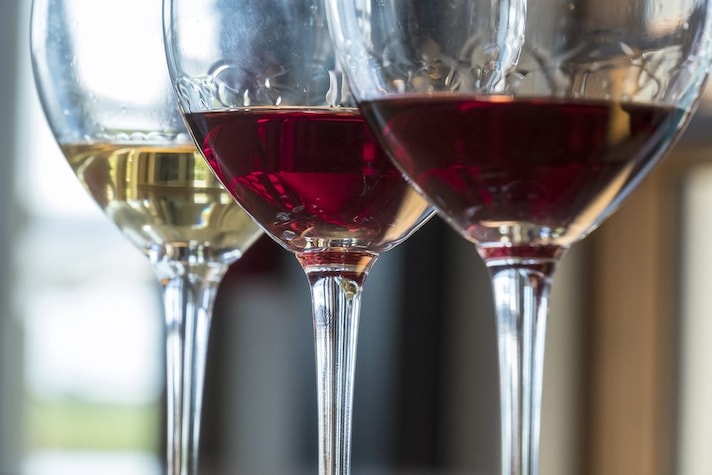
Swirling a glass of wine just after pouring is one of the most iconic gestures seen by sommeliers, and one that's often imitated at a restaurant table, perhaps without really knowing why. If you've observed what happens inside the glass, you've probably noticed the formation of a series of curved lines at the top, alternating with drops falling downward: the former are called arches, while the latter are known as tears and are the consequences of the same physical phenomenon that occurs with both white and red wine (but also with a passito, grappa, or another spirit) and which can provide a clue as to what we're drinking: the alcohol content. Let's see how.
What Are Arches and Tears and Why Do They Form?
To explain arches and tears, you need to know that wine is composed primarily of two elements: water (usually 80% or more) and ethanol, or ethyl alcohol. When you swirl the glass, a thin film of liquid forms on the inside walls of the glass, from which the alcohol begins to evaporate before the water, creating a sort of ring along the edges at the top. Gravity causes drops (tears) to form from this ring, which fall downwards, with semi-circular drips (arches) appearing between them.

This is a physical phenomenon called the Marangoni Effect, or, better yet, the Gibbs-Marangoni Effect, after the two scientists—one American and one Italian—who studied it in the second half of the 19th century. It is linked to the difference in surface tension of liquids, or, in other words, the force that holds the surface molecules of a liquid together. Water has a higher surface tension than ethanol and evaporates later: during rotation, the wine tends to rise and concentrate towards the top, where it is in greater contact with oxygen, and therefore the alcohol evaporates, resulting in a greater surface tension, visible in the ring we referred to earlier. Obviously, due to the force of gravity, the wine cannot rise infinitely, and so, when the glass stops, it is quickly drawn to the bottom, with the ring “breaking,” giving rise to the aesthetic detail of the teardrops punctuated by the arches.
How to Understand The Alcohol Content
In the past, the Marangoni Effect tended to be used as an indicator of quality, to understand the good or bad structure of a product, and to generally evaluate its organoleptic properties. Now, however, other variables come into play in tastings, but arches and tears are still functional during the visual examination of the glass to intuit the alcohol content at first glance. In general, the rule is that if the arches and tears are thicker, more numerous, and denser, with the drops falling more slowly, the wine is likely to have a high alcohol content, above 13% vol., while if they are few, thin, and with tears falling quickly, then the wine is lighter. We repeat, however, that the Marangoni Effect should not be interpreted as a universal truth: it is more likely to form in wines at room temperature than in cold ones, and even the cleanliness of the glass can influence and distort the result, for example, if after being washed it retains traces of limescale or residues, even imperceptible, of detergent.
;Resize,width=767;)
